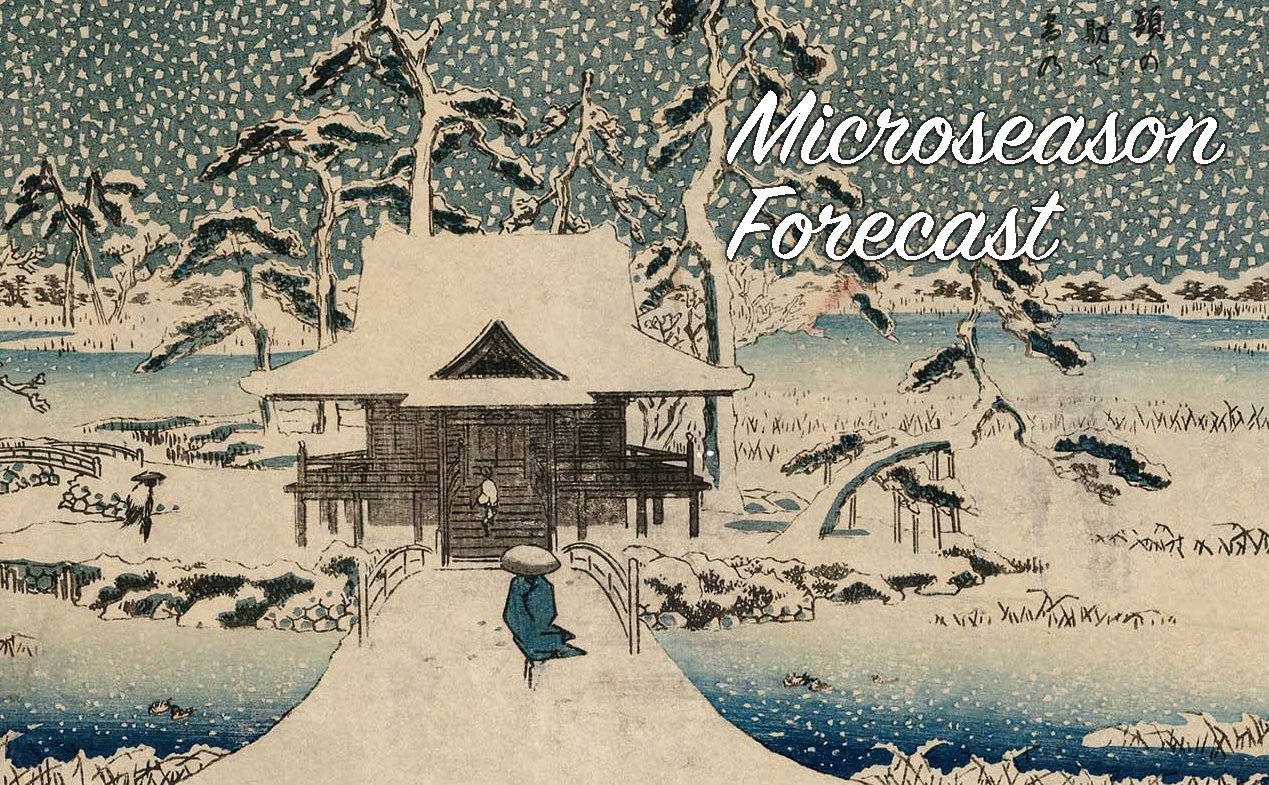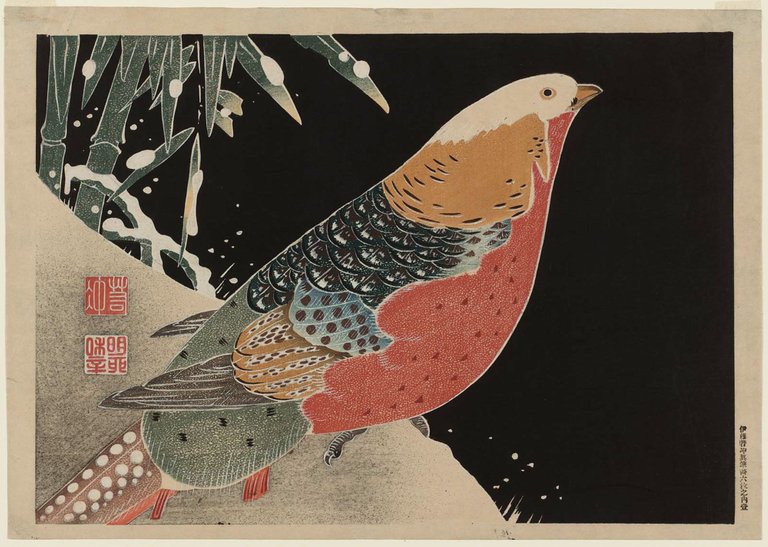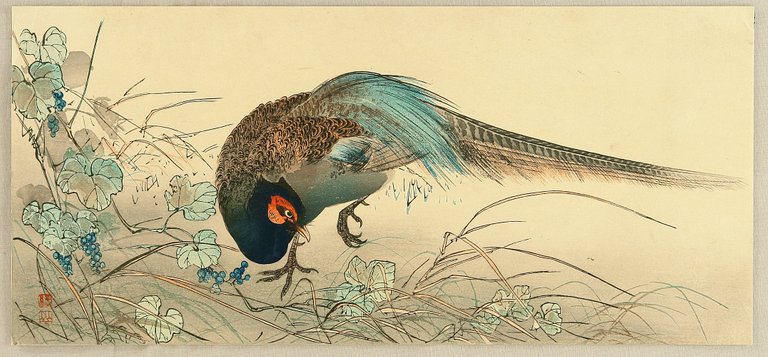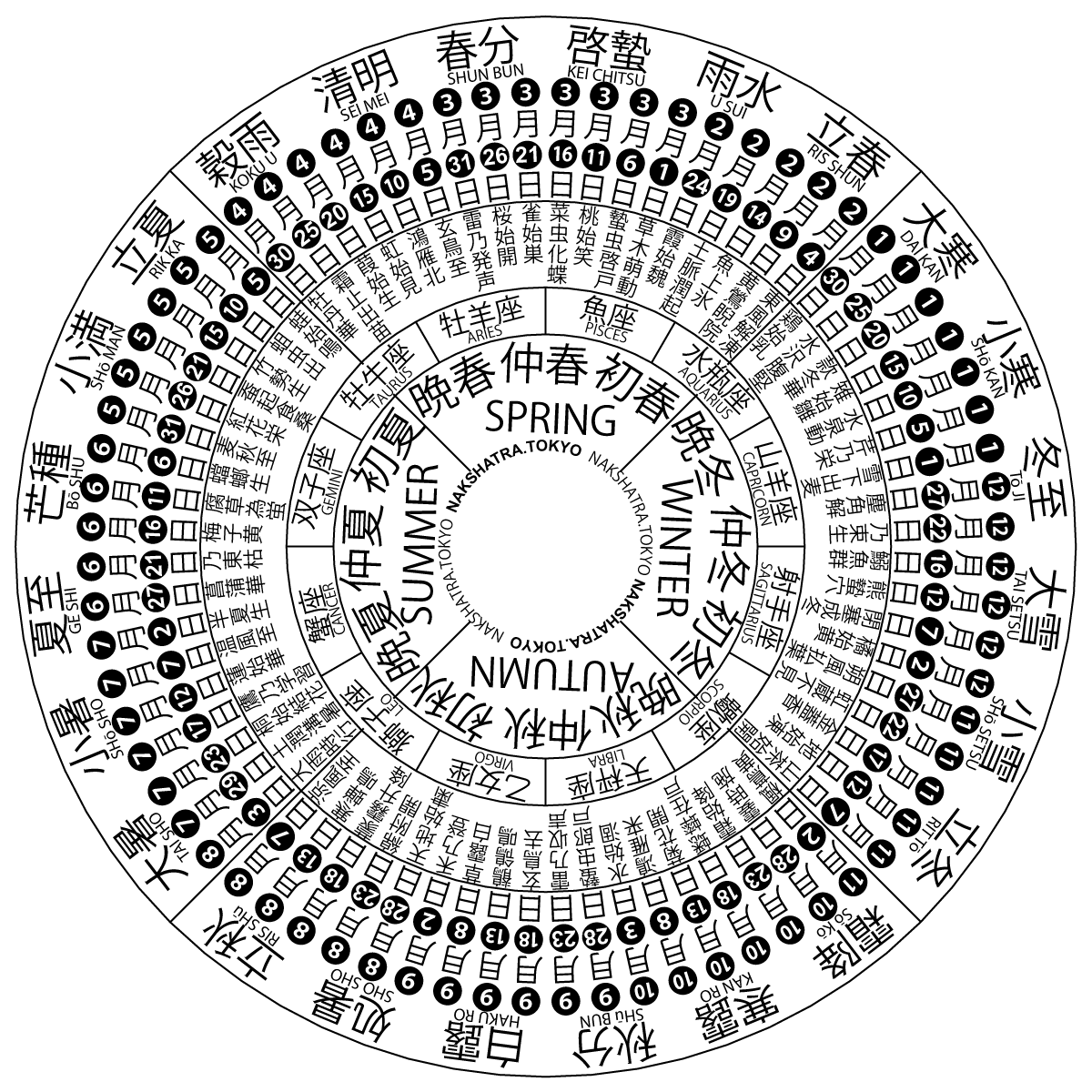
Today begins a new microseason! If this is your first time joining us, scroll down past the forecast to read about what exactly a microseason is. For the rest of you, let’s jump in!
The Current Solar Term: Shōkan
Jan 5th began Shōkan (小寒), the 23rd solar term (節気, sekki), which means Small Cold.
Shōkan started Jan 5th and lasts until Jan 20th. We talked about this last time, so go here if you’d like to read more.
The Current Microseason: The Pheasant Starts to Call
Today, Jan 16th, begins 雉始雊, the 69th microseason (候, kō) which is read kiji hajimete naku and means The Pheasant Starts to Call. This is the third microseason of Shōkan, which is itself the fifth solar term of winter.
The pheasant is a very beloved bird in Japan. It is the national bird and has long been prized for both food and beauty. Pheasants were said to be the messengers of Amaterasu, the sun goddess and most important deity in Japan. In one of the most beloved Japanese folk takes, Momotaro, a pheasant helps Momotaro beat back the demons. There is a superstition that when you hear a pheasant cry, it may predict an earthquake.
Around this time is when the pheasant starts to cry, a very distinctive, high-pitched cry. Rather than predicting earthquakes, however, it is part of the pheasant courting ritual. As the male courts the female, he cries more and more. It is said that the more crys we hear, the closer to spring we are. Let’s hope we hear a lot!

Seasonal Vegetable: Mizuna
Sometimes translated Japanese mustard greens, this is a a wonderful vegetable that is said to be at its best when winter is at the worst. It can go in soup or on salad, in stir-fries or in nabe (hot pot), or can even be pickled. A truly versatile food!
A famous dish made with mizuna is harihari nabe (はりはり鍋). It was originally made with whale meat, but these days pork or duck often are used instead. Hari Hari refers to the sound mizuna makes when we chew it.

Here is a haiku for this microseason:
osoki hi ya kiji no oriiru hashi no ue
a pheasant
settles on the bridge
—Buson
Buson was a painter first and foremost; here he is painting us a scene but with words instead of his brush. One can easily picture exactly what he was seeing when this verse came to mind.

Will move this info to another post one of these days, but for now, briefly:
- Each month has two seasons, called solar terms (節気, sekki), giving us a total of 24 seasons. This gives the system its name, the 24 Sekki (二十四節気). I usually refer to this entire system as The Japanese Almanac. It is more than a little similar to the American Farmer’s Almanac.
- Each of these 24 seasons is further subdivided three more times, giving us a grand total of 72 seasons, or microseasons (候, kō).
- Each microseason is about 5 days. With time periods so short, they can get pretty specific about what in nature we might expect to be happening around now.
- The system was originally from China, but it was reformatted during the Edo Era (1603–1868) to fit better with Japan’s climate. I find it also fits fairly well with much of the Midwest in the Eastern half of the US. But if you live in a different area, your milage may vary.
- The entire system is based on the equinoxes and solstices, so it is fluid and the exact dates will vary by a day or two from year to year. Luckily there are a great many Japanese sources that do the astrological computations for us and tell us exactly when each one starts and ends every year.

The next microseason starts on Jan 21. See you then for the next forecast!
This post has received a 100.00% upvote from @fambalam! Join thealliance community to get whitelisted for delegation to this community service.
Oh, no. Shokan already. Time flies!! Thanks for this reminder 😉👏 🥦 !LUV 🥦
@mizuosemla(7/10) gave you LUV.